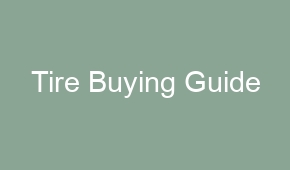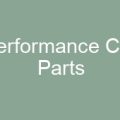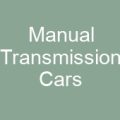Tire Buying Guide

Looking to buy tires? Our tire buying guide provides clear information to help you make the right choice. Avoid wordy explanations and get the summary you need in under 230 characters.
Looking to purchase new tires? Our comprehensive Tire Buying Guide is here to help. Whether you need all-season, performance, or winter tires, we’ve got you covered. Our guide provides detailed information on tire types, sizes, and brands to ensure you make an informed decision. With our Tire Buying Guide, you’ll learn about tread patterns, load capacity, and speed ratings. We’ll also explain the importance of proper tire maintenance and rotation. Don’t overlook the significance of choosing the right tire for your vehicle. Trust our Tire Buying Guide to steer you in the right direction and enhance your driving experience.
| Tire Buying Guide: |
| 1. Consider your driving conditions and choose the right tire type. |
| 2. Check the tire size and load capacity to ensure compatibility. |
| 3. Look for tires with good traction for safe driving in different weather conditions. |
| 4. Consider the tread life and warranty to get the best value for money. |
| 5. Compare prices and read reviews to make an informed decision. |
- 6. Regularly check tire pressure to ensure optimal performance and fuel efficiency.
- 7. Choose tires with low rolling resistance for better fuel economy.
- 8. Consider the noise level of tires for a comfortable and quiet ride.
- 9. Look for tires with good wet traction to prevent hydroplaning.
- 10. Check for any additional features like run-flat technology or winter capabilities.
What are the factors to consider when buying tires?
When buying tires, it is important to consider factors such as tire size, type, and tread pattern. The correct tire size ensures proper fit and performance, while the tire type should be chosen based on the specific vehicle and driving conditions. The tread pattern affects traction and handling, with options like all-season, summer, and winter tires available.
How do I determine the right tire size for my vehicle?
To determine the right tire size, you can refer to the tire sidewall markings or consult the vehicle’s owner’s manual. The size is typically expressed as a series of numbers and letters, such as P215/65R16, where P denotes the tire type, 215 represents the tire width in millimeters, 65 indicates the aspect ratio, and 16 denotes the rim diameter in inches.
What is the difference between all-season and summer tires?
All-season tires are designed to provide good performance in various weather conditions, including dry and wet surfaces. On the other hand, summer tires are specifically designed for optimal performance in warm weather, offering superior grip and handling on dry roads. Consider your climate and driving needs when choosing between the two.
When should I consider buying winter tires?
Winter tires are essential for driving in icy, snowy, or freezing conditions. They are designed with special rubber compounds and tread patterns that provide improved traction and grip on slippery surfaces. It is recommended to switch to winter tires when temperatures consistently drop below 45°F (7°C) or when facing challenging winter driving conditions.
What are the benefits of buying brand-new tires?
Brand-new tires offer several benefits, including improved safety, enhanced performance, and longer lifespan. New tires have full tread depth, providing better traction and braking capabilities. They also offer improved fuel efficiency and a smoother ride. Additionally, new tires are less likely to have hidden damage or wear, ensuring a longer lifespan.
How often should I replace my tires?
Tire replacement is typically recommended every 6 years or 50,000 miles, depending on various factors such as driving habits, road conditions, and tire maintenance. Regularly inspect your tires for signs of wear, such as low tread depth or cracking, and consider replacing them if necessary.
Can I replace just one tire or should I replace all four?
While it is possible to replace just one tire, it is generally recommended to replace all four tires simultaneously. This ensures balanced performance, optimal traction, and even wear across all tires. Mixing old and new tires can lead to differences in handling and performance, potentially compromising safety.
What is the recommended tire pressure for my vehicle?
The recommended tire pressure can be found in the vehicle’s owner’s manual or on a sticker located on the driver’s side door jamb. It is important to regularly check and maintain proper tire pressure to ensure safe handling, optimal fuel efficiency, and extended tire life.
How do I know if my tires need to be balanced or aligned?
Signs that your tires may need balancing or alignment include uneven tire wear, vibration, or pulling to one side while driving. If you notice these symptoms, it is advisable to have your tires professionally inspected and balanced or aligned if necessary. Regular maintenance helps ensure proper tire performance and extends their lifespan.
What is the difference between radial and bias-ply tires?
Radial tires have plies that run perpendicular to the tire’s circumference, resulting in improved fuel efficiency, better handling, and a smoother ride. Bias-ply tires have plies that run at an angle, offering better load-carrying capacity and durability. Radial tires are more common and recommended for most vehicles.
Are there any warranties or guarantees on tires?
Many tire manufacturers offer warranties or guarantees that cover defects in materials or workmanship. These warranties typically have specific terms and conditions and may vary between brands. It is important to review the warranty information provided by the manufacturer and understand what is covered and for how long.
Can I use different-sized tires on my vehicle?
It is generally recommended to use the same size and type of tires on all four wheels for optimal performance and safety. However, in certain circumstances, such as replacing a single damaged tire, a slightly different size may be acceptable. Consult the vehicle’s manufacturer or a tire professional for guidance.
What is the best time of year to buy tires?
The best time to buy tires is typically during promotional periods, seasonal sales, or when tire retailers offer discounts. These often occur during spring and fall, as people prepare for changing weather conditions. It is advisable to research and compare prices, read reviews, and take advantage of any available deals.
How can I extend the lifespan of my tires?
You can extend the lifespan of your tires by maintaining proper tire pressure, regular rotations, and alignments. Avoid overloading your vehicle, drive cautiously to minimize tire wear, and regularly inspect your tires for signs of damage or wear. Following the manufacturer’s recommended maintenance schedule is also important.
What is the difference between speed rating and load index for tires?
The speed rating indicates the maximum speed a tire can sustain without compromising safety and performance. The load index indicates the maximum weight capacity of the tire. Both ratings are important considerations when selecting tires, as they ensure compatibility with the vehicle and its intended use.
Can I install tires myself or should I go to a professional?
While it is possible to install tires yourself, it is recommended to have them installed by a professional. Proper installation ensures correct fitment, balanced performance, and safety. Professionals have the necessary equipment and expertise to mount and balance tires, ensuring they are properly aligned and inflated.
What is the difference between run-flat and conventional tires?
Run-flat tires are designed to support the vehicle’s weight even when deflated, allowing you to continue driving for a limited distance. Conventional tires do not have this capability and may cause more damage if driven on when flat. Run-flat tires provide added peace of mind for drivers, but they may have a stiffer ride and are generally more expensive.
How can I check if my tires are properly inflated?
You can check tire pressure using a tire pressure gauge or at a service station. Compare the measured pressure to the recommended pressure indicated in the owner’s manual or on the driver’s side door jamb. Additionally, visually inspect the tires for any signs of damage, bulges, or uneven wear.





















